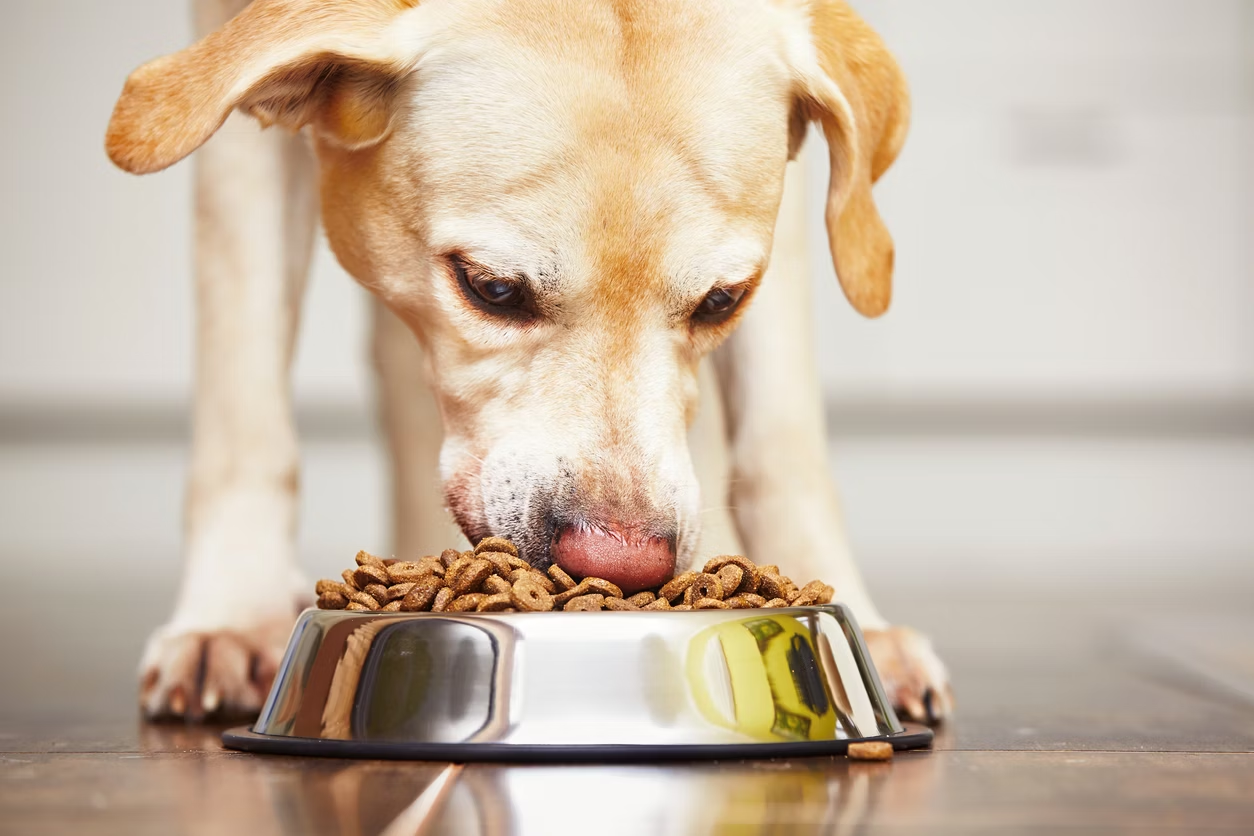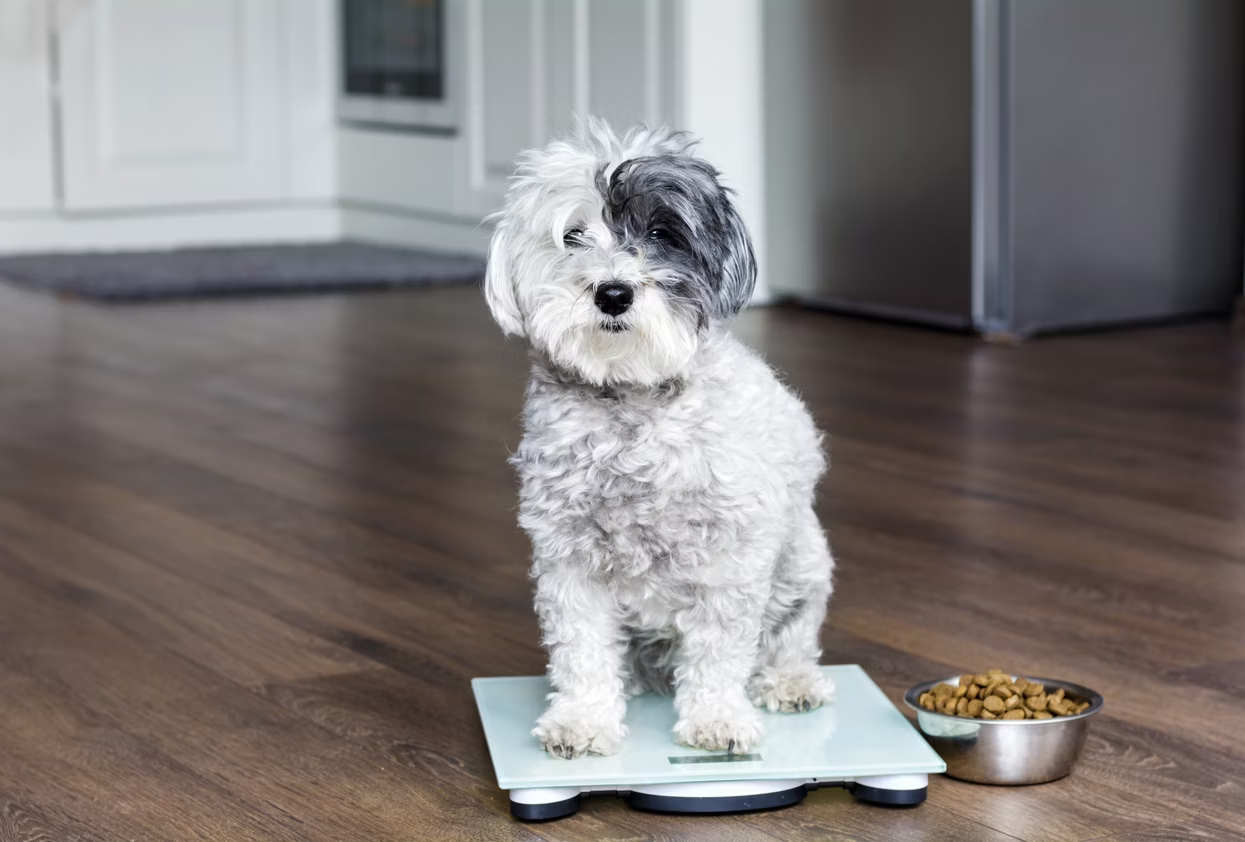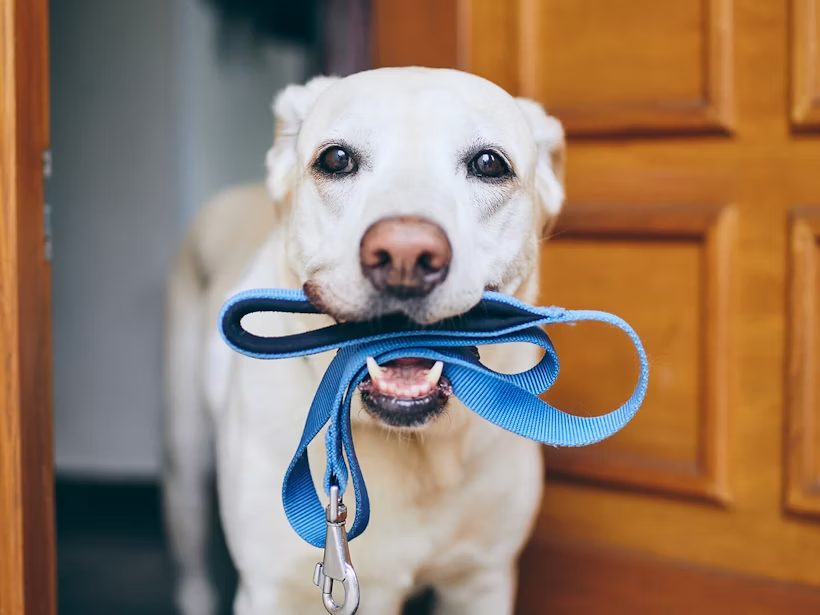Weight gain in dogs is on the rise. According to a survey conducted by the Association of Pet Obesity Prevention on the prevalence of pet obesity in the United States, 59% of dogs evaluated were classified as overweight or obese in 2022.
That statistic is alarming, because extra weight gain can lead to serious health complications for our furry friends. So let’s dive into the causes of weight gain in dogs, learn how to recognise it, and review what steps you can take to manage your dog’s weight effectively.
Why is weight gain a concern?
As a pet parent, your dog’s long-term health and happiness are a top priority. One of the ways you can help ensure both is to understand the factors that contribute to your pet’s weight and then take steps throughout their life to keep them in an ideal weight range. Why does weight matter? Because excess weight in dogs is linked to several serious health problems, including diabetes, heart disease, arthritis, and a reduced lifespan.

Causes of weight gain
Weight gain in dogs can result from various factors, and understanding the root cause can help you better manage your pet’s health.
1. Overfeeding. One of the most common causes of weight gain in dogs is overfeeding. Many pet parents unintentionally feed their pets too much, whether it’s due to free-feeding practices, excessive treats, or simply not understanding the unique nutritional needs of their dog.
2. Inadequate exercise. Dogs require regular physical activity to maintain a healthy weight, but the amount they need will vary based on their breed, age, and health. Breed research may give you a starting point for determining your dog’s daily exercise needs. For more specific information, your veterinarian is a great resource.
3. Age. As dogs age, their metabolism slows down and they tend to be less active. This natural ageing process can lead to weight gain if their diet isn’t adjusted accordingly. For some dogs, this may mean reducing their portions, while others may do best on a diet formulated for seniors.
4. Spaying and neutering. While spaying and neutering have many benefits, these procedures can also slow a dog’s metabolism, making it easier for them to gain weight. Pet parents should talk with their veterinarian about the best time to spay or neuter their dog and discuss how this might affect their diet and exercise plan.
5. Medical conditions. Certain health conditions, such as hypothyroidism and Cushing’s disease, affect a dog’s hormone levels and can cause weight gain if not properly treated.
6. Genetics. Some breeds are more predisposed to weight gain than others. For example, a mutation in the POMC gene identified in Labrador Retrievers and Flat-Coated Retrievers is associated with increased appetite and obesity. But that’s just one example of how genetics play a role. Wisdom Panel’s Premium dog DNA test screens for behaviour traits that may impact a dog’s likelihood of gaining weight.

Recognising signs of weight gain
It’s easier to correct a problem before it gets out of hand. Identifying the signs of weight gain in your dog early on is crucial for effective management. Here are some indicators that your dog may be overweight:
- Changes on the scale. While it can be a challenge for bigger dogs, regularly weighing your dog is the easiest and more accurate way to detect even small changes in their weight.
- Visible signs: If you can’t easily feel your dog’s ribs without pressing hard, or if there is a noticeable lack of a waist when looking at your dog from above, your dog may be carrying extra weight.
- Behavioural changes: Overweight dogs may be less active, more reluctant to exercise, or get tired quickly during activities they previously enjoyed.
- Body condition score (BCS): Veterinarians use a body condition score to assess a dog’s weight. After visually assessing a dog and feeling their body, they assign a score between either 1-5 or 1-9, with the low end of the scale being underweight and the high end overweight. A score in the middle is considered ideal.
If your dog is overweight or obese, it’s a good idea to make an appointment with your veterinarian. They can perform a physical examination to determine if any health conditions may be contributing to weight gain. And, they can partner with you on ways to safely help your pup lose weight.
Creating a plan for your dog’s healthy weight management
Managing your dog’s weight involves a combination of dietary choices, appropriate physical activity, regular veterinary check-ups, and treatment of any underlying conditions. It may sound like a lot to tackle, but taking it step-by-step will help your dog achieve and maintain a healthy weight.
1. Partner with your veterinarian. Your veterinarian is your best resource for developing a weight management plan tailored to your dog’s specific needs. They can help you determine an ideal weight for your dog and provide guidance on diet, exercise, and monitoring progress.
2. Pay close attention to your dog’s diet. Many factors go into selecting the best food for your pup. Check out our detailed guide for specific information, and in the meantime, start with the tips below.
- Portion control: Measure or weigh your dog’s food accurately to ensure they are getting the right amount of calories. Avoid free-feeding and stick to scheduled meal times.
- Quality food: Choose high-quality dog food that is nutritionally balanced. Read the label and look for products that adhere to AAFCO guidelines, and ideally have undergone feeding trials.
- Lower calorie options: If your dog needs to lose weight, consider switching to a diet that’s formulated specifically for weight management. This ensures your dog still gets the nutrition they need while still reducing calories to facilitate weight loss.
3. Limit treats and table scraps. Treats should make up no more than 10% of your dog’s daily caloric intake. Opt for healthy, low-calorie treats and avoid giving table scraps, which can be high in fat and calories (plus are much harder to track).
4. Daily exercise. Ensure your dog gets regular exercise appropriate for their breed, age, and overall health. Activities can include everything from walks and interactive toys to dog sports like agility and flyball.
5. Monitor progress. Keeping a close eye on your dog’s weight will help you take action early if unwanted changes occur.
- Regular weigh-ins: Weigh your dog regularly and make adjustments if they start to gain or lose weight.
- Body condition score: During regular check-ups, your veterinarian can assess your dog’s body condition score and advise on any needed adjustments to their diet and exercise routine.
6. Address underlying medical issues. If your dog’s weight gain is due to a medical condition, follow your veterinarian’s treatment plan. Managing the underlying condition is crucial for successful weight management.
Final thoughts
Managing your dog’s weight is an important part of ensuring their overall health and well-being. By understanding the causes of weight gain, recognizing the signs early, and implementing a comprehensive weight management plan with the help of your veterinarian, you can help your dog lead a healthier, happier life. Remember, weight management is an ongoing process that requires commitment and consistency. With the right approach, you can make a positive impact on your dog’s quality of life.














